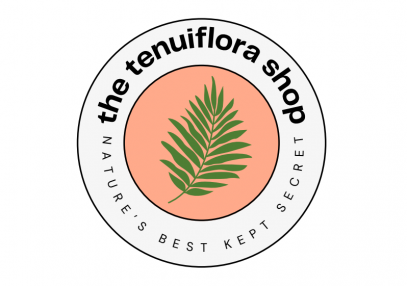In the world of textile and artisan crafts, there’s been a powerful shift. Natural dyeing is no longer just a niche for history buffs and hobbyists — it’s a movement embraced by eco-conscious creators everywhere. Among the many botanicals used to create plant-based color, one stands out for its depth, versatility, and rich history: mimosa hostilis.
Natural dye with mimosa hostilis is not only beautiful but deeply connected to traditional practices and sustainable values. In this guide, we’ll take you deep into the world of natural dyeing with mimosa hostilis, including why it’s prized, how to use it, and how to make sure you’re sourcing your dye material ethically and responsibly.
Why Choose Natural Dye with Mimosa Hostilis?
Mimosa hostilis, also known as mimosa tenuiflora, is native to Mexico and parts of Brazil. For centuries, indigenous cultures have used its inner root bark for healing, rituals, and yes — color.
When processed properly, mimosa hostilis root bark produces earthy pinks, purples, browns, and subtle mauves. These hues are far from flat or boring; they layer and shift based on how they’re prepared and what fabrics they meet.
Natural dye with mimosa hostilis is beloved for several reasons:
- Eco-friendly and biodegradable: Unlike synthetic dyes, mimosa hostilis doesn’t pollute waterways or expose artisans to harmful chemicals.
- Rich, variable tones: From blush pinks to deep purples and russet browns, its versatility is unmatched.
- Excellent tannin content: This helps bind color to fibers naturally, creating lasting color.
- Connection to tradition: Using plant-based dyes connects us to the artisans of the past while embracing modern sustainable values.
How Natural Dye with Mimosa Hostilis Works
The key to creating beautiful color lies in the tannins and pigments naturally present in the root bark. Tannins help act as a mordant, which means they assist in binding pigment to the fabric — making the colors more wash- and light-fast without harsh chemicals.
When simmered in water, mimosa hostilis root bark releases its color compounds. The resulting dye bath can then be used to soak natural fibers such as cotton, silk, wool, and linen.
The final color is affected by several factors:
- Fabric type (protein fibers like wool produce different tones than cellulose fibers like cotton)
- Mordant use (alum, iron, and copper can shift colors dramatically)
- pH level of the dye bath (acidic solutions lean pinker while alkaline baths shift toward purples and browns)
- Soak time (the longer the fabric soaks, the deeper the color)
Preparing Fabric for Dyeing
Natural dyeing works best on fabrics that are properly prepared. This helps ensure the dye penetrates the fiber evenly and holds.
Scouring the Fabric
Before dyeing, wash fabric thoroughly to remove oils, dirt, or sizing from manufacturing. For cotton or linen, boiling with soda ash and water is recommended. For wool or silk, use a gentle, pH-neutral soap.
Mordanting
While mimosa hostilis contains natural tannins, mordanting enhances colorfastness and shifts hues. Alum is a safe, easy-to-use mordant for beginners. Iron, on the other hand, will darken and mute the colors for more rustic tones.
How to Dye with Mimosa Hostilis Root Bark
Materials Needed:
- Mimosa hostilis root bark powder (finely ground)
- Natural fiber fabric or yarn
- Non-reactive dye pot (stainless steel or enamel)
- Water (preferably distilled)
- Strainer or cheesecloth
- Mordant (optional)
Step-by-Step Process
- Prepare the Dye Bath
- Add mimosa hostilis root bark powder to water at a ratio of approximately 50g powder per 500ml water.
- Simmer gently (do not boil) for 1-2 hours to extract the color.
- Strain out bark solids to leave only the liquid dye bath.
- Mordant the Fabric (Optional)
- Pre-mordant fabric with alum or iron, or skip if you want soft, natural hues.
- Dye the Fabric
- Add wet fabric to the warm dye bath.
- Simmer gently for at least 1 hour, stirring occasionally.
- For deeper color, leave fabric to soak overnight.
- Rinse and Dry
- Rinse dyed fabric gently in cool water until clear.
- Hang or lay flat to dry in the shade.
Creative Applications for Mimosa Hostilis-Dyed Fabrics
The gorgeous tones created with natural dye and mimosa hostilis lend themselves perfectly to artisan crafts and eco-luxe products.
Popular uses include:
- Slow fashion clothing collections
- Hand-dyed scarves and shawls
- Pillow covers and home textiles
- Quilts and natural fiber throws
- Wall hangings and fiber art
For natural brands, mimosa hostilis-dyed goods offer a unique selling point. The subtle, natural colors tell a story of sustainability, slow craftsmanship, and ancient plant wisdom.
Where to Buy Premium Mimosa Hostilis Root Bark Powder
Not all bark powders are equal. If you want to achieve the best results with natural dye and mimosa hostilis, it’s crucial to start with premium material.
At Tenuiflora Shop, we offer:
- Ethically harvested bark from trusted sources in Mexico and Brazil
- Finely ground powder for optimal extraction and smooth dye baths
- Lab-tested material for purity and artisan-level consistency
- Transparent sourcing and fair trade partnerships
We know how important it is for artisans and small brands to get reliable, beautiful results every time.
External Botanical Resource
Interested in learning more about the botany behind mimosa hostilis? Visit Kew Gardens Plant Profile for scientific data and its natural habitat.
Final Thoughts
Creating natural dye with mimosa hostilis isn’t just about making beautiful colors — it’s about reconnecting with traditional, sustainable practices. In a world dominated by synthetic dyes and fast fashion, using plant-based color feels refreshingly grounded and intentional.
Whether you’re an artisan dyer, textile designer, or eco-conscious brand, mimosa hostilis offers a botanical path to creating fabric that is not only beautiful but meaningful.
Ready to get started with your natural dye journey? Shop premium Mimosa Hostilis Root Bark Powder here and create stunning, earthy tones for your next project.
Tagged: natural dye with mimosa hostilis, botanical dyes, eco-friendly textiles, artisan dyeing, plant-based colors, sustainable fashion

Image Source: Mimosaland

